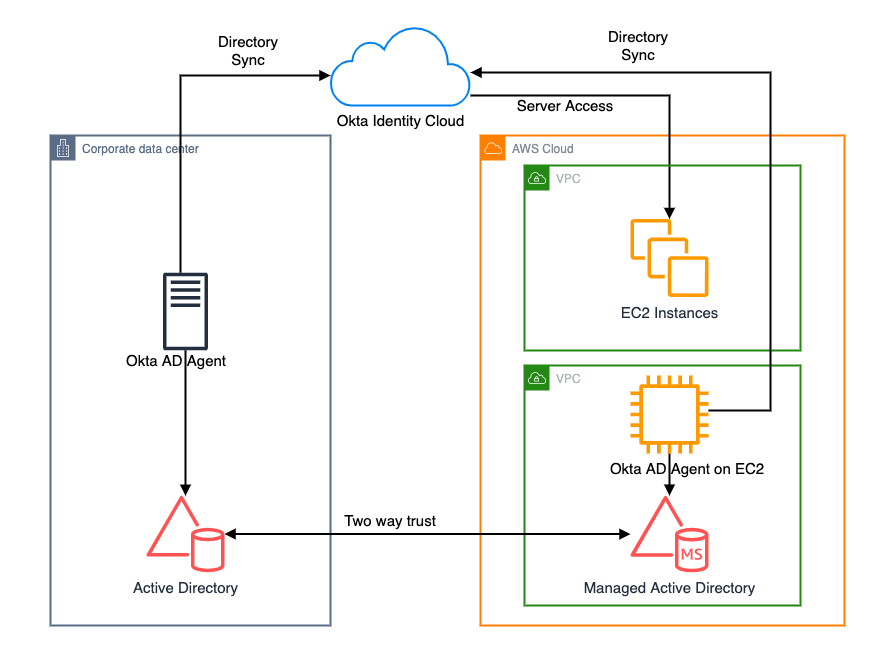AWS Architecture Blog
Category: Intermediate (200)
Building Resilient and High Performing Cloud-based Applications in Hawaii
Hawaii is building a digital economy for a sustainable future. Many local businesses are already embarking on their journey to the cloud to meet their customers’ growing demand for digital services. To access Amazon Web Services (AWS) on the US mainland, customers’ data must traverse through submarine fiber-optic cable networks approximately 2,800 miles across the […]
How Meshify Built an Insurance-focused IoT Solution on AWS
The ability to analyze your Internet of Things (IoT) data can help you prevent loss, improve safety, boost productivity, and even develop an entirely new business model. This data is even more valuable, with the ever-increasing number of connected devices. Companies use Amazon Web Services (AWS) IoT services to build innovative solutions, including secure edge […]
Integrate Okta to Extend Active Directory Infrastructure into AWS
Are you ready to extend your on-premises Active Directory to Amazon Web Services (AWS) to remove undifferentiated heavy lifting? Would you like to maintain a highly available Directory Service for your applications? Companies who have already set up integration with Okta Identity Cloud for external or internal applications require Active Directory objects to be synced […]
Ingesting PI Historian data to AWS Cloud using AWS IoT Greengrass and PI Web Services
In process manufacturing, it’s important to fetch real-time data from data historians to support decisions-based analytics. Most manufacturing use cases require real-time data for early identification and mitigation of manufacturing issues. A limited set of commercial off-the-shelf (COTS) tools integrate with OSIsoft’s PI Historian for real-time data. However, each integration requires months of development effort, […]
How Cimpress Built a Self-service, API-driven Data Platform Ingestion Service
Cimpress is a global company that specializes in mass customization, empowering individuals and businesses to design, personalize and customize their own products – such as packaging, signage, masks, and clothing – and to buy those products affordably. Cimpress is composed of multiple businesses that have the option to use the Cimpress data platform. To provide […]
Migrate Resources Between AWS Accounts
Have you ever wondered how to move resources between Amazon Web Services (AWS) accounts? You can really view this as a migration of resources. Migrating resources from one AWS account to another may be desired or required due to your business needs. Following are a few scenarios where this may be of benefit: When you […]
Scaling Data Analytics Containers with Event-based Lambda Functions
The marketing industry collects and uses data from various stages of the customer journey. When they analyze this data, they establish metrics and develop actionable insights that are then used to invest in customers and generate revenue. If you’re a data scientist or developer in the marketing industry, you likely often use containers for services […]
Augmenting VMware Cloud on AWS Workloads with Native AWS services
VMware Cloud on AWS allows you to quickly migrate VMware workloads to a VMware-managed Software-Defined Data Center (SDDC) running in the AWS Cloud and extend your on-premises data centers without replatforming or refactoring applications. You can use native AWS services with Virtual Machines (VMs) in the SDDC, to reduce operational overhead and lower your Total […]
Automate Document Processing in Logistics using AI
Multi-modal transportation is one of the biggest developments in the logistics industry. There has been a successful collaboration across different transportation partners in supply chain freight forwarding for many decades. But there’s still a considerable overhead of paperwork processing for each leg of the trip. Tens of billions of documents are processed in ocean freight […]
Building a Data Pipeline for Tracking Sporting Events Using AWS Services
In an evolving world that is increasingly connected, data-centric, and fast-paced, the sports industry is no exception. Amazon Web Services (AWS) has been helping customers in the sports industry gain real-time insights through analytics. You can re-invent and reimagine the fan experience by tracking sports actions and activities. In this blog post, we will highlight […]








